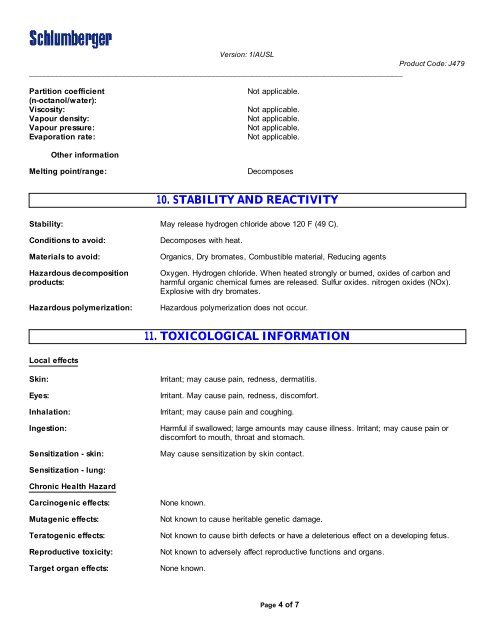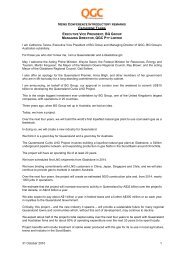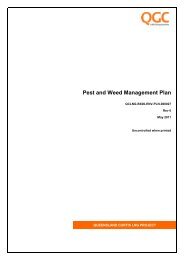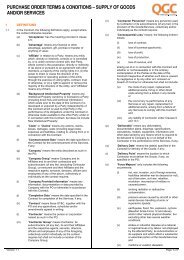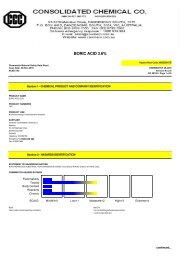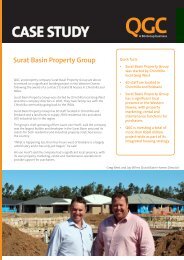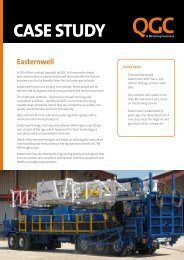SAFETY DATA SHEET - Santos
SAFETY DATA SHEET - Santos
SAFETY DATA SHEET - Santos
Create successful ePaper yourself
Turn your PDF publications into a flip-book with our unique Google optimized e-Paper software.
Version: 1/AUSLProduct Code: J479________________________________________________________________________________________Partition coefficient(n-octanol/water):Viscosity:Vapour density:Vapour pressure:Evaporation rate:Not applicable.Not applicable.Not applicable.Not applicable.Not applicable.Other informationMelting point/range:Decomposes10. STABILITY AND REACTIVITYStability:Conditions to avoid:Materials to avoid:Hazardous decompositionproducts:Hazardous polymerization:May release hydrogen chloride above 120 F (49 C).Decomposes with heat.Organics, Dry bromates, Combustible material, Reducing agentsOxygen. Hydrogen chloride. When heated strongly or burned, oxides of carbon andharmful organic chemical fumes are released. Sulfur oxides. nitrogen oxides (NOx).Explosive with dry bromates.Hazardous polymerization does not occur.11. TOXICOLOGICAL INFORMATIONLocal effectsSkin:Eyes:Inhalation:Ingestion:Sensitization - skin:Irritant; may cause pain, redness, dermatitis.Irritant. May cause pain, redness, discomfort.Irritant; may cause pain and coughing.Harmful if swallowed; large amounts may cause illness. Irritant; may cause pain ordiscomfort to mouth, throat and stomach.May cause sensitization by skin contact.Sensitization - lung:Chronic Health HazardCarcinogenic effects:Mutagenic effects:Teratogenic effects:Reproductive toxicity:Target organ effects:None known.Not known to cause heritable genetic damage.Not known to cause birth defects or have a deleterious effect on a developing fetus.Not known to adversely affect reproductive functions and organs.None known.Page 4 of 7


